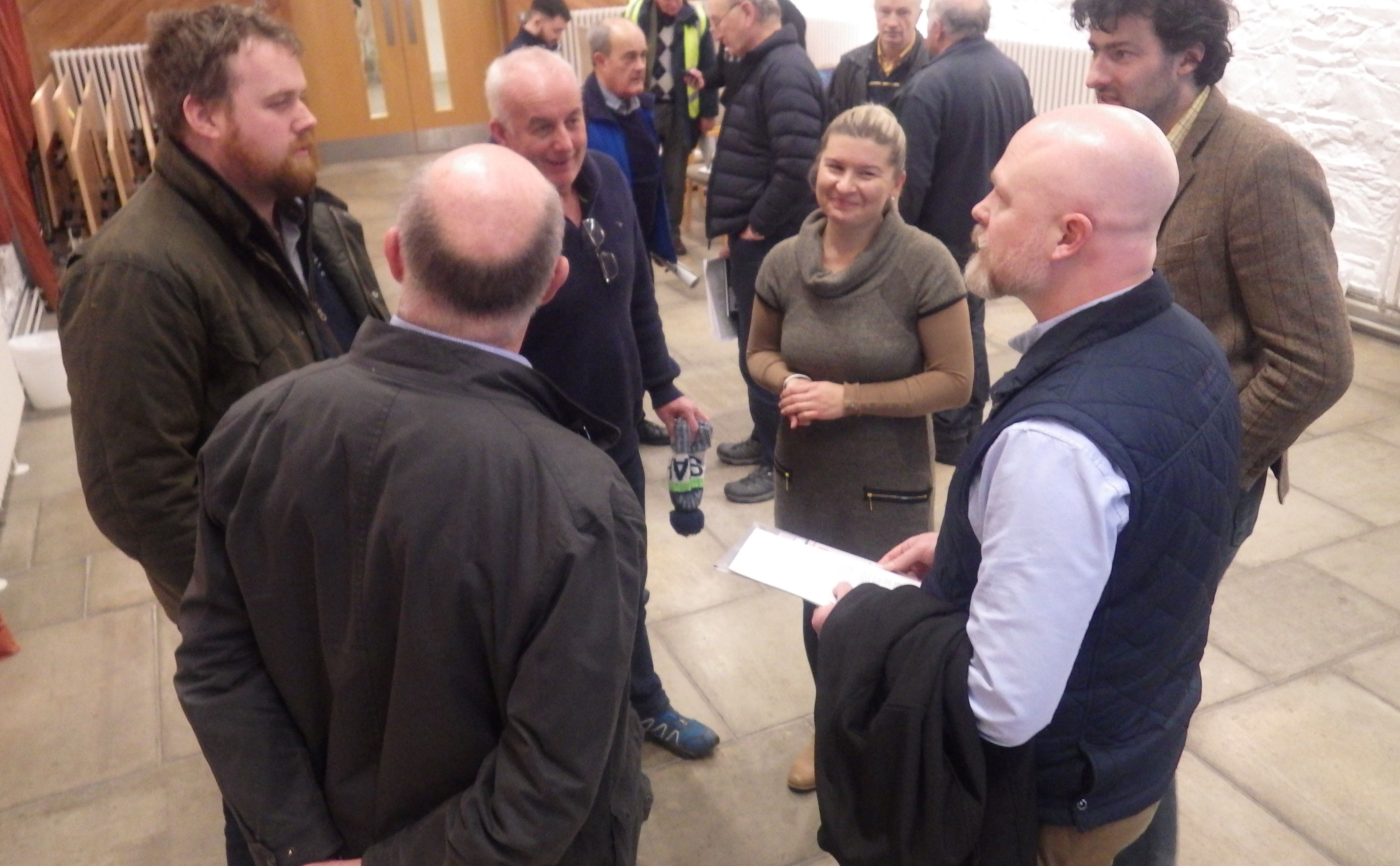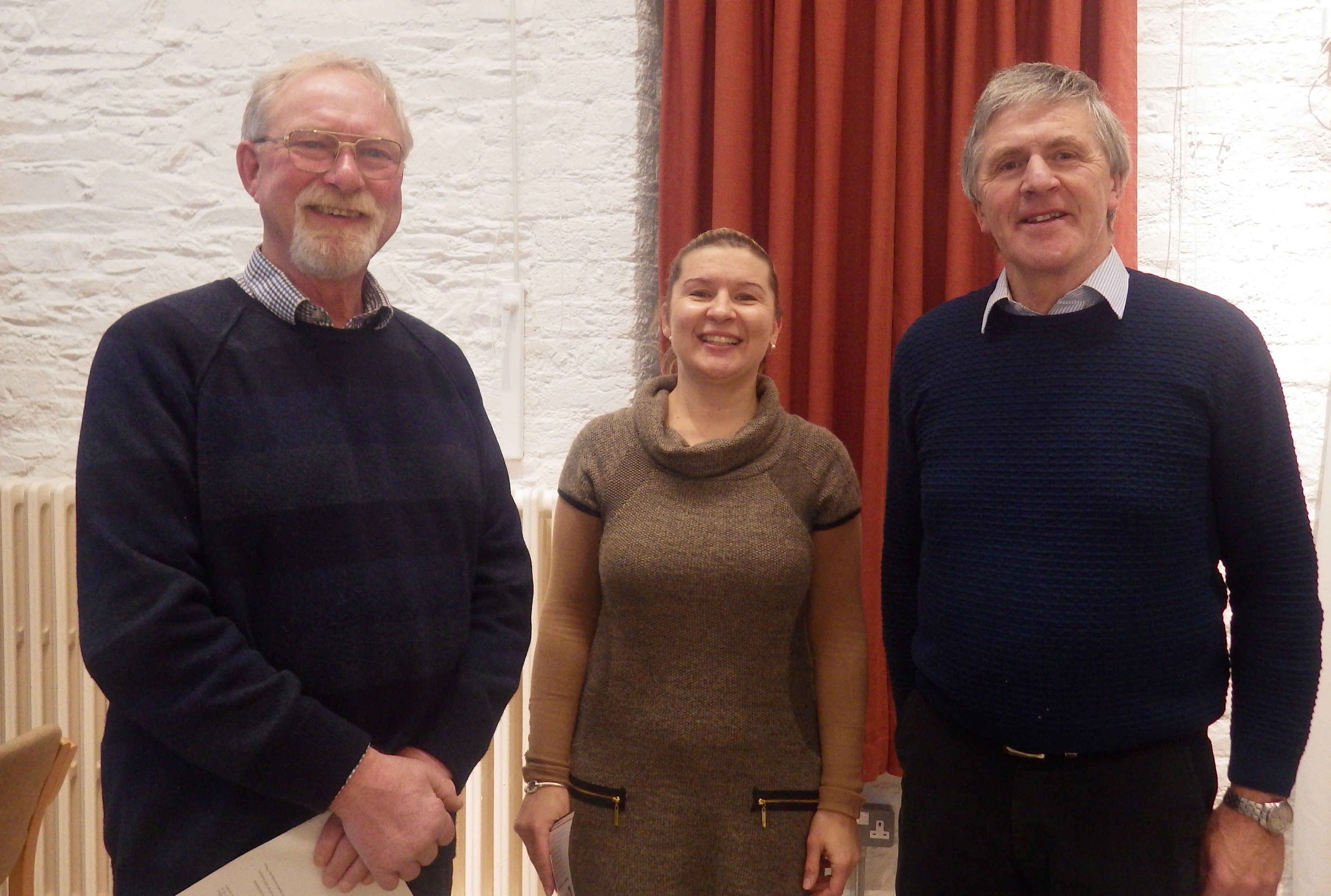

Effects of reducing traffic and tillage on agricultural land
Dr Paula Misiewicz, Senior Lecturer in Soil and Water Management and Agri-Tech Research Lead at Harper Adams University recently addressed members and guests of the Northern Ireland Branch of IAgrE on the subject of “Reducing agricultural traffic and tillage in arable and grassland production systems.”
In her role, within the Crop and Environmental Sciences and Engineering Departments at Harper Adams, Dr Misiewicz has been directly involved, since 2012, in research quantifying the effects of traffic and tillage on agricultural land. Harper Adams University is well known for its graduate and upwards courses (serving more than 4000 students) which include Agriculture, Animal Studies, Business and Agri-food, Wildlife, Environment and Sustainability, Engineering (Agricultural / Mechanical / Automotive), Land and Property Management, Veterinary Nursing and Veterinary Physiotherapy and Applied Life Sciences (Zoology and Entomology). More details can be viewed at www.harper-adams.ac.uk Some of the other current research projects there include the use of autonomous field machinery (the Hands Free Hectare / Farm projects ), precision spraying and the use of drones in agriculture.
Harper Adams has 435 ha of mixed farm land as part of its 700 ha estate, at Newport, Shropshire.
The importance of soils
Dr Misiewicz commenced by emphasising the importance of protecting the scarce and vital resource of soil which is the foundation for up to 99% of our world food supplies. Up to 75% of soils are believed to be already substantially degraded. The role of soil in controlling ground water movement and holding it to support crop growth is unique and vital. Across the earth’s surface its total volume for a 200mm deep soil layer over 8,400 square km, is equivalent to a 25 km diameter sphere!
Agricultural machinery pressures
Traditionally farmers used individual live animal horse power for cultivation and other duties. Now an average sized tractor / implement combination weighs at least 13 times more than its animal equivalent and the trend is upwards. Compaction imposed by machinery on the soil structure causes reduced crop yields, increases tillage draught power requirement and reduces water infiltration rates. This effect represents an estimated £1 billion/ year loss across England and Wales alone.
For current farm fieldwork, typical wheeled track surface coverage is 85% for plough-based tillage, 65% for shallow minimal tillage and 45% for zero / no tillage. Uncontrolled random traffic can impose up to 90% surface field cover.
The compaction effects of tractors and other machines can be partly reduced by use of tracks or larger tyres to distribute the weight over a larger area. Development of specialist, more flexible tyres capable of carrying full loads at lower inflation pressures is a positive development. The possible adoption of smaller, light weight autonomous machines carrying out programmed crop work, like mechanical weeding and reduced volume pesticide / nutrient application, may have a useful role in some future crop husbandry methods.
Controlled Traffic Farming or CTF is based on using current machinery systems but designing the work to minimise the amount of wheel track coverage across the field surface, Depending on implement bout widths, accurate satellite based steering control can now reduce coverage to less than 30% with resultant crop yield increases of around 4 -7%.
The Harper Adams trials are designed around utilisation of the current types and sizes of machinery used by commercial farmers or contractors. Their cost / benefit evaluations are based on up-to-date values for running costs, machine ownership and crop returns.
The crop rotation used includes spring and winter varieties of wheat, barley, oats and beans. It does not currently involve root crops like potatoes. Average annual rainfall is 600 to 700 mm.
Before the research project commenced the field was under-drained and subsoiled to a depth of 0.5m to disrupt any underlying compaction and confirm uniformity across the slightly sandy loam soils. The experimental site layout included 36, 4m wide and 80m long plots with randomised and replicated 3 x 3 design. This provides 9 separate treatment systems across 4 land blocks.
Field work systems
The field work was carried out using:-
(1) A 4wd MF 8480 tractor running on standard tyres at “normal”tyre pressures ( 17psi front and 21 psi rear ). STP
(2) The same tractor fitted with Michelin Ultra Flex tyres capable of carrying the same loads at reduced inflation pressures of 10 psi both front and rear. LTP
(3) Guiding the same equipment on LTPs to achieve 30% or estimated 15% controlled wheeling coverage (CTF 30% and CTF 15%). Restricting traffic to permanent wheel ways reduces soil compaction to relatively narrow strips and maximises the remaining undamaged soil area available for crops.
Three tillage depths (deep 250mm, shallow 100mm and Zero (restricting the seed drill depth) were used. Overall results for the CTF 30% treatment achieved a 4% crop yield increase and CTF 15% increased it to around 7%.
The crops, apart from beans, showed no general yield advantage from the deep tillage treatments. Cultivation loosening and re-compaction systems cause the most damage to the soil structure. The zero tillage plots were the most resistant to compaction by traffic.
Grass silage production related trials
The Harper Adams research team have also co-operated with technical staff at other sites in the UK. These include CTF Europe (who promote and co-ordinate the adoption of controlled traffic farming practices) and SRUC (Scotlands Rural College’s Dairy Research and Innovation Centre) in studying field work systems to assess the benefits of controlled traffic farming for grass silage production.
Grassland machinery use
Matching machine widths / wheel tracks and the use of wider working widths for mowers, grass swathers, fertiliser spreaders and umbilical slurry application can now achieve trafficked areas down to 13%. Mixed farms can also make use of the same guidance systems for use with their arable cropping enterprises. Using a self-propelled forage harvester filling a rear hitched trailer from swathes windrowed after 12m mowing can get wheeled coverage down to 13.4%. A rapid convenient system for swopping the laden trailer at the headland would be advantageous in maintaining workrate. Side-loading to a tractor- drawn trailer running in an adjacent traffic lane 9m away is not feasible. Workrate also suffers if CTF prevents the use of the shortest route for laden trailers getting to the field exit. The recent development of on-board tyre pressure adjustment systems can now facilitate use of reduced trailer tyre pressures when in the field.
Summary
Overall, the ongoing research confirms that both soil structures and yields improve as the result of a reduced traffic and tillage system. The further development and adoption of CTF techniques will help the agriculture industry to treat its precious soil assets with the respect they deserve.
A detailed interactive technical discussion followed around the research and its implications for established farming practices everywhere.
The meeting closed with sincere thanks to Dr. Misiewicz for her excellent / most enjoyable presentation and to AFBI for use of their impressive venue.


career - your passport to professionalism...
If you have a query about events, click here...



